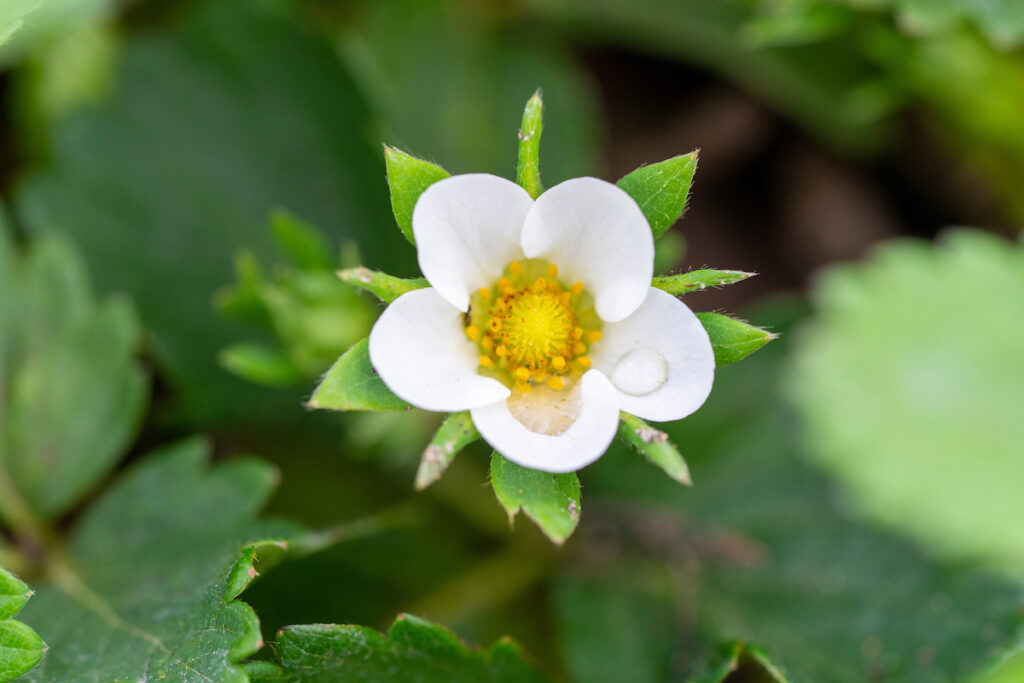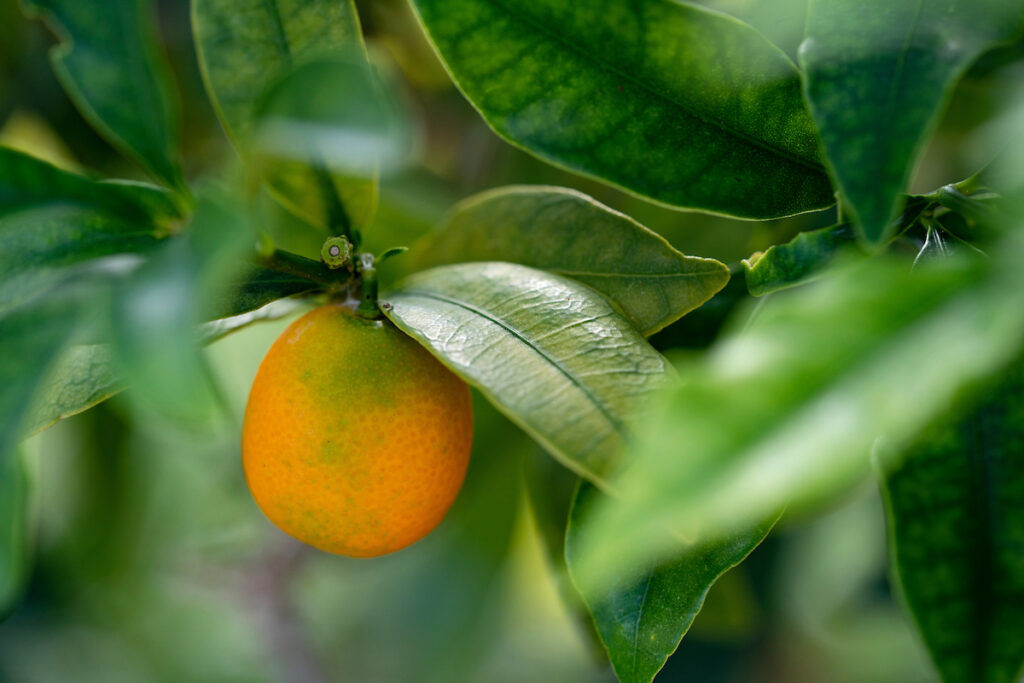Autumn garden advice: Maintain the leaves you have, plan and plant ahead
AgriLife Extension’s Fall Gardening Guide offers tips on bulbs, seeds and holiday plants
Some lucky gardens in Texas were blessed with a recent rain around the time the calendar marked the first day of fall.
While the rain helped, it didn’t negate the damage drought has done. Gardeners need to remain vigilant and keep leaves on their landscape plants as long as possible as we enter autumn and cooler weather.

“Early drop of leaves does not allow for food storage to protect against winter damage,” said Larry Stein, Ph.D., Texas A&M AgriLife Extension Service horticultural specialist, Uvalde, and professor in the Texas A&M College of Agriculture and Life Sciences Department of Horticultural Sciences. “Try to maintain leaves on plants until frost. You should continue to water the most valuable plants in your landscape as best you can.”
In addition to trying to maintain the plants you have growing, autumn is the time to think ahead to what you want your garden to look like in 2024. Advance planning will ensure you can get the flowers you want, rather than what your garden center may just have left later in the year.
“October through November is an excellent time to purchase bulbs while you still have a good selection in the garden center,” Stein said. “They may be planted at any time, with the exception of tulips and hyacinth.”
Chill tulip and hyacinth bulbs in the refrigerator until mid- or late-December before planting. Stein said the lower part of the refrigerator is best and that bulbs should not be in airtight plastic bags during refrigerated storage.
“Plant bulbs in well-prepared beds so the base of the bulb is at a depth that is three times the diameter of the bulb,” he shared. “In sandy soil, set slightly deeper and in clay soil, set slightly shallower.”
In addition to bulbs, now is the time to check your nursery or garden center for started plants of snapdragons, pinks, sweet Williams, poppies and calendulas.
“Planted now in South and East Texas, they will usually provide a riot of spring color, but wait until late winter or early spring to plant in North Texas,” Stein said.
Utilize your garden for holiday decor
If you want your Christmas cactus to bloom for the holidays, immediate action is required.

Keep Christmas cactus in a sunny spot where night temperatures can be kept below 65 degrees. Buds will drop if you allow night temperatures to go above 70 degrees or if you allow the plant to become excessively dry.
“Christmas cactus should also be kept in total darkness from 5 p.m. until 8 a.m. or about 30 days in October to initiate flower buds,” Stein said.
Gardeners wanting to make seasonal dried arrangements should harvest material for them now. Stein suggests choosing cockscomb, flowering artemisia, already mature okra pods, flowering oregano stalks and others to enhance fall and winter bouquets.
He also warned that holly plants with a heavy set of fruit can often suffer a fertilizer deficiency.
“An application of a bit of fertilizer late this month can be helpful and provide a head start for next spring,” Stein said. “Remember not to put too much as we don’t want to stimulate new growth.”
Garden tips for October
Properly apply compost and soil
Start collecting leaves for the compost pile. Be sure to have extra soil available so that each 6-inch layer of leaves may be covered with several inches of soil. Always wet the layer of leaves thoroughly before adding the soil. Add about 1 pound of a complete lawn or garden fertilizer to each layer of leaves to provide the necessary nitrogen for decomposition.
Save seeds from favorite plants
If you have saved seeds of your favorite plants, allow them to become air dry, then place them in an airtight container and store in the refrigerator. Be sure to label each packet carefully. Remember, not all the seed from hybrid plants will resemble the parent plants.

Prepare for pansies
Prepare beds for planting pansies when they become available at the garden centers. They need a well-drained soil and exposure to at least a half-day of sun. It is best to use started plants, as seeds are difficult to handle.
Caladium tuber storage tips
If you are planning to save caladium tubers for another year, dig them in late October, and allow to dry in a well ventilated but shady area. After seven to 10 days, remove leaves and dirt, then pack in dry peat moss, vermiculite or similar material for storage. Pack tubers so they do not touch each other. Dust them with all-purpose fungicide as you pack. Place the container in an area where temperature won’t drop below 50 degrees.
Divide and reset perennials
There is still time to divide and reset such perennials as phlox, violets, hollyhocks, irises, day lilies, and Shasta daisies.
Reduce the odds of insect and disease for next year’s garden
October is a good time to reduce the insect and disease potential in next year’s garden. Clean up the garden, removing all annuals that have completed their life cycle. Remove the tops of all herbaceous perennials that have finished flowering or as soon as frost has killed the leaves.
Battle beetles

If twig girdlers have worked over your trees so that many twigs and branches are dropping, make sure these are collected and destroyed. The beetle’s eggs are deposited in that portion of the branch that drops to the ground.
Select the proper place to plant sweet peas
Plant seeds of sweet peas in South and East Texas during October/November. Select a site where there is at least a half-day of sun and protection from north winds.
Remove weeds, scatter wildflower seeds
Now is prime time to scatter wildflower seed; remember to put them in sunny locations. Also, since wildflowers could technically be called weeds, you will have to remove other weeds from around them in order for them to get established.
Lookout for turf disease and winterize lawn
Be on the lookout for turf diseases and treat them accordingly. Remember to reduce lawn watering as temperatures begin to cool. Also, now is a good time to “winterize” your lawn with a bit of fertilizer. Since this can vary as to your area of the state, check with your local AgriLife Extension agent for the best timing and amount.
Strawberries can still be planted

Strawberries can continue to be planted; the goal is to establish the plants and carry them through the winter for fruiting next spring. Remove runners and/or fruit as they form.
Consider moisture before planting container trees
Container ornamental trees and shrubs can be planted if there is good soil moisture. If exceedingly dry, one may want to wait for the fall rains.
Keep an eye on citrus color
Citrus will begin to color as the temperatures cool. Most times the fruit does not need to be totally orange to have good eating quality.


